#tree lore
Explore tagged Tumblr posts
Text
Flora of the Vreem Home World
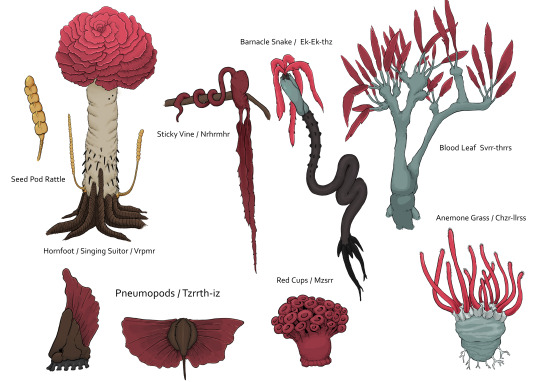
Flora on the vreem home world is more closely related to fauna, as the two share the same phyla. This is because, the origins of multicellular photosynthesis is fundamentally different than earth's.
Unlike on earth where eukaryotic photosynthesis evolved via symbiosis with cyanobacteria this process never occurred on their home world. Instead their version of photosynthesis developed later as a type of membrane bound protein structure in the earliest ancestor of both their flora and fauna phyla. As a result the flora across the vreem home world is more closely related to their animal life than those on earth.
Here's a collection of different flora-fauna your might come across on the vreem home world. Most flora use a red photosynthetic pigment in their foliage, but other pigments such blue-green and even gold are also found across the world and are typically more common among aquatic species. Each species is listed with an earthling name along side its Onomatopoeia derived from Khllk, a commonly spoken vreem language.
Singing Suitors "Hornfoots"
Evolved from a worm like ancestor, their leaves are modified gills filled with the red photo-sensitive pigment used in their process of photosynthesis. They get their name in khllk due to the rattle like "seed pots" which when blown in the wind produces a sound similar to a "Vreem" chirp. They are colloquially called hornfoots by humans, as their root structures are made of heavily ossified tissue baring a resemblance to horns. Water is drawn from the soil through capillary action similar to trees on earth. Hornfoots are a relatively primitive group of floral type fauna as they retain a central cavity, mouth, and two simple compound eyes. They protect their fills by pulling them inwards into their central cavity.
Sticky Vines Predatory flora are common across their homeworld. Sticky Vines, typically hang from the stocks / branches of other flora and use their two sticky oral arms to snag flying pray. While their too small to be considered a threat to the vreem, their oral arms are difficult to spot in the red jungles they grow in, and as a result they often present a collision hazard below the canopy
Barnacle Snakes Are a related species to sticky vines, whoever they retain more of their ancestral form. They typically grow rooted to a larger structure, a rock face or another large flora species. They share a similar gill structure like hornfoots, but theirs are sticky. They're predominately air filter feeders, surviving mostly on spores and small bugs. Unlike hornfoots they have a complete gut.
Land Corals Red Cups, Anemone Grass and Blood Leafs are three flora species which are from colonial clade. They individual flora which are comprised of smaller specialized clones which function together as a single organisms. This tends to give them a more "plant-like" appearance, similar to other colonial animals like corals on earth.
Pneumopods This group of animals tend to occupy the "insect / bug" niches like those of arthropods of earth They're very small organisms no larger than a human fingernail. However their biology share more in common with echinoderms (starfish / sea urchins) than insects. They have an endoskeleton comprised of plates as a row of tube feet for locomotion. These two have photosynthetic spiney membranes. The species on the right are gliders and feeds on the hemolymph of other flora.
69 notes
·
View notes
Note
Tell me more about trees 🌳 💚
They're very warm inside, they like the wind a lot!
When trees fall, if there's a percentage of roots still in the ground, they're not dead, they can keep living. If in theory we had one giant human who just went around picking trees up and burying them back down, they would all recover and be fine. I was going to put that in my story when I wrote a continuation of Thornwood! I just think it would be very cool.
Some trees still go on living even when fallen down, they just adapt so their branches become the new trunk and they grow up form there.
The reason trees lose their leaves in the fall is related to the hours of light we have in the day, more so than the cold. Trees do a little calculation, and when there's less than ideal light in the day, they go 'well, this is not worth keeping leaves', and they let the leaves fall off, because it's not worth the effort for that little amount of light. Then in the spring, when they notice the light hours getting better, they start making new leaves, because now it's worth keeping all that greenery in order to receive nutrients! But trees are definitely not 'dead', or 'sleeping' during the winter, they're very much alive and calculating their next move. If you look at a tree in January or February, you'll be able to see them already forming lots of little buds and preparing to grow flowers, they're very much active! And I imagine they're enjoying how saturated the ground is with water, growing the roots down and taking in all they can.
If anyone can think of more tree knowledge on the spot, add to this post!
53 notes
·
View notes
Text
anatomy of a tree | jackieshauna | 1.4k words | canon compliant
The very center of a branch is referred to as the pith or the medulla. It is the softest part of the branch and is composed of living cells. Were one to compare a tree to the human body, the heart could be an apt comparison to the pith. After all, the Ancient Greeks believed it to be at the center of the soul. Maybe it'll even taste like one too. But when understood in a more literal sense, the center of the human body could perhaps be viewed more as the stomach. The heart may pump blood around your body, but isn’t the stomach the true heart? Is that not where life forms: bark, roots, guts, fingernails? Perhaps, that is where trees and people differ the most.
Think of it like this, Shauna: are the trees really enough to keep both of you fed?
Read here!
#jackieshauna#shaunajackie#yellowjackets#my writing#shauna shipman#jackie taylor#tree lore#post-jackies death pre-cannibalism#they eat trees idk#desperate times call for desperate measures
7 notes
·
View notes
Text
The Watchers by the Well
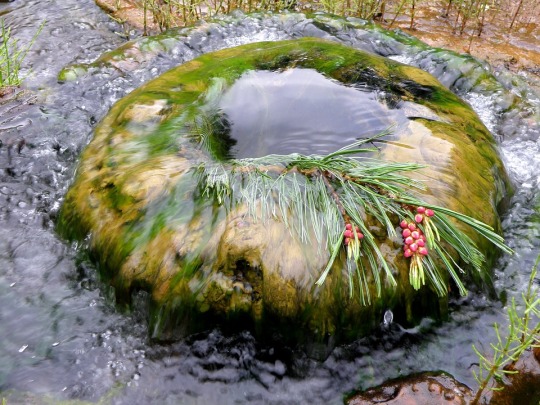
The folk tale ‘The Watchers by the Well’ has an eerie quality of old magic about it. Its ‘frame’ narrative is about a man living alone in a forest full of wood and water spirits. He decides to look for a wife, but chooses one who appears to be unsuitable for the life he lives in the haunted wood. But he marries her anyway. Problems soon begin to occur as she wilfully interferes with the various magical defences around the cottage. The outcome of the story is that she has to learn how to live in this place and the learning process is the chief part of the plot of the tale. But the tale is also of great interest because of the various magical elements it contains. These include:
Ribbons by the Well
Ribbons, rags and other items such as pins were common around holy wells either as offerings or as magical tokens. Ribbons function here as a way of keeping the ash tree in his place. But when the wife takes them to put in her hair the tree attacks the house and is not to be seen anywhere the next day.
Ash Tree
Ash trees often appear in tales as malevolent or aggressive spirits that have to be contained or protected against. Whereas beech trees are often seen as benevolent. Tree lore is a field that needs more detailed exploration.
Wise Woman
‘White Mary’ lives nearby and is able to put right what the inexperienced wife has spoiled. She is a more positive teacher than the husband:
“White Mary stood godmother after she’d filled the gaps in the stones into the wood, and rebuilt the wishing well with mosses and herbs, and the sweet water was gushing out in its old slender spout, and there was a little ash tree nodding above it with seven ribbons.”
She is the archetypal fairy godmother, white witch and magical helper. As well as building magical defences around the house and the well she teaches the wife how to live safely in a dangerous place of spirits and dark presences.
Nick-Nicky- Nye
He is the water spirit whose green eyes frighten the wife when she sees them looking up from beneath the waters of the river. She makes the mistake of showing him her fear and so cannot wash her clothes in the river. Though she learns how to live with the other threats, Nicky is never contained. When he tries to grab her baby she needs the combined efforts of her husband, White Mary and the spayed spaniel bitch to help her.
The Spaniel
The ‘white and gold spannel’ of this story is an essential element in the protection of the house. Spayed spaniel bitches are attested elsewhere as possessing magical powers and as defenders from malevolent spirits. She keeps Nicky at bay and after the attack on the baby she eventually drives the spirit further down the river away from the house. When the ash tree attacks she defends the house and a gnawn branch is found the next day when the tree has gone. The spaniel also stands guard after the magical configuration of stones is moved by the wife.
The tale is magically evocative of the haunted forest and the way of life of those who live there with its other inhabitants. The husband, with the help of White Mary, knows exactly how to do this. But the wife has to learn. The use of standard folk-tale motif of the ‘disobedient wife’ perhaps exaggerates her wilfulness in failing to follow the proper observances. She initially tramples White Mary’s good-luck nosegay into the ground, moves the ‘untidy’ stones and kicks the spaniel. The husband’s unsuccessful attempts to teach her have to be supplemented by the more sympathetic White Mary, and this also accords with standard tale format. But she does learn. And what she learns is something akin to The Fern Law of Faery. She learns to live with the wood spirits, bogles and the like. At the conclusion of the tale the spaniel comes to sit by her at the fireside indicating the completion of the learning process.
***
This tale appears in Katherine Briggs’ Dictionary of British Folk Tales {Part A Vol 1. pp 554-560}. It was collected by Ruth Tongue from a travelling gipsy but assigned to the Welsh-English border area. Another tale, featuring the same characters and haunted wood, but before the wife has arrived, is ‘The Harbourer and the Hare’ but this tale was collected in a different part of the country.
2 notes
·
View notes
Text
By Pandora Young, on March 9, 2015
For all of humankind’s existence we have relied on trees for food, medicine, and shelter. Trees are some of the largest and longest lived organisms on earth. So it is no surprise that ancient civilizations attributed great meaning to trees. Longwood Gardens’ own foundation is centered on Peirce’s Arboretum, a historic collection of trees started in the 1800s on the land that was to become the Gardens.
Lore for Ash, Oak, Holly, Linden at the link.
#tree lore#pennsylvania#longwood gardens#peirce's arboretum#ash tree#oak tree#linden tree#holly tree
3 notes
·
View notes
Text
Trees
I wanted to chit chat a little bit about a minor but sort of neat aspect of one of my world building projects.
in the world compass to the stars, people have a rather different relationship to the trees.
thing is that the most common kind of magic in the world is plant magic that corrupts the mind.
this means that there are many people in the world who can hear trees speak. because of this trees are well taken care of, and wood harvesting is approached in a different matter.
rarely is the entirety of a tree harvested for use, instead the practice of copping is common. that is harvesting the limbs and branches of the tree. there is an entire team of peoples who's job it is to sooth and heal the tree during the process to ensure the trees comfort. to gain the consent from the tree for what it is used for.
trees are venerated for their age, especially trees tat are over a hundred years in age, they have a similar sort of status to the three fantastic beast (dragons, phoenixes and unicorns) though the trees are seen as a more spiritual connection. in part because the three fantastic beasts are sentient creatures with their own societies.
wooden objects are given a lot of prestige.
#worldbuilding#world building#elemental magic#lore#compass to the stars#star compass#trees#tree lore
9 notes
·
View notes
Text

One of the things that I learned from the Ogham alphabet is to go outside and get to known the trees that are connected to the letters of this medieval Celtic alphabet. Several years ago I made this painting of the first tree in the Ogham, Beithe or birch. Lately I've taken up the journey again, to learn more about the ogham, the lore of the letters, the magic and myth connected to it, and of course the trees that represent the letters and the land they grow in. A natural way for me to connect with something is to make a drawing or painting of it - as I did with Beithe. This year and the next I am planning to complete this series.
3 notes
·
View notes
Text

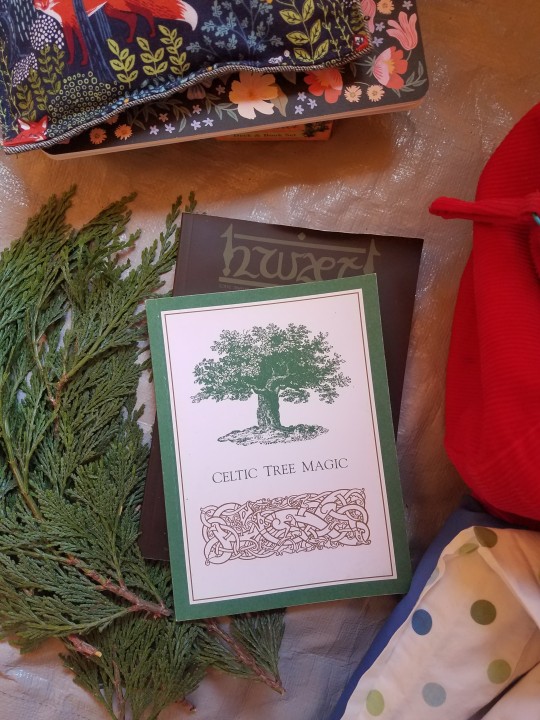
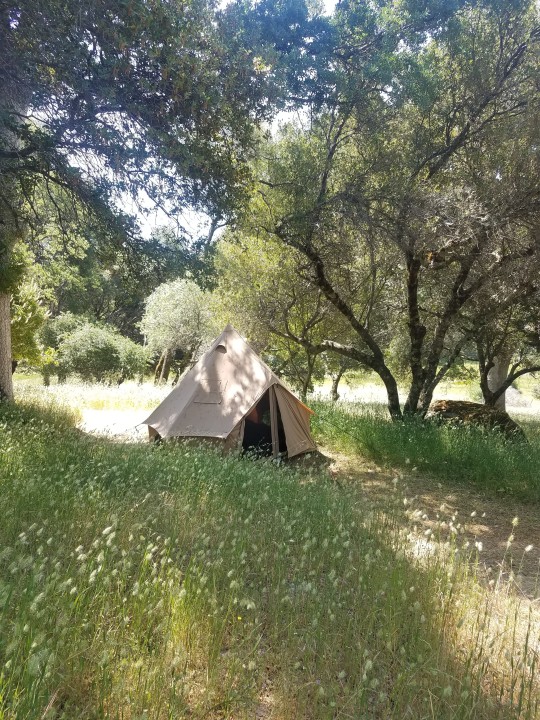
:: summer days & witchy reads ::
((Celtic Tree Magic by the Witches' Almanac))
5 notes
·
View notes
Text
a little lore for vampire slayers...☝🤓
ok...so THAT SCENE in "Sinners" has certainly been discussed to death by now, so i won't go into it at all myself.
what i DO want to bring up, on the other hand, is lore about certain types of trees, specifically their magical properties and/or how effective they could be against malevolent supernatural beings.
Example #1--Not only were the spines of a blackthorn tree used in spells and the wands of witches constructed from them, but the wood is also what shillelaghs are made of...which leads me to my next point:
Example #2--Ya know what else was used as material for weapons and fighting malevolent beings...? Yew wood, because not only did people use yew wood to make arrows for their longbows, but the Abhartach (Irish vampire legend) was finally taken out by a sword made of this same wood.
Kinda makes me wonder out loud if both of these could be used as weapons against more modern monsters as well. 😉
anyways...not putting this in the movie tags at all, because i am NOT INVITING THAT FREAKY BASTARD ONTO MY PAGE TYVM. goodnight.
#random autistic infodump#lore dump#tree lore#blackthorn#yew#the blackthorn tree#the yew tree#blackthorn wood#yew wood#vampire slayers#vampire lore#the abhartach#vampire legends#irish vampire
1 note
·
View note
Text
Beech Trees: 10 Fascinating Folklore Facts | Spooky Isles
0 notes
Text
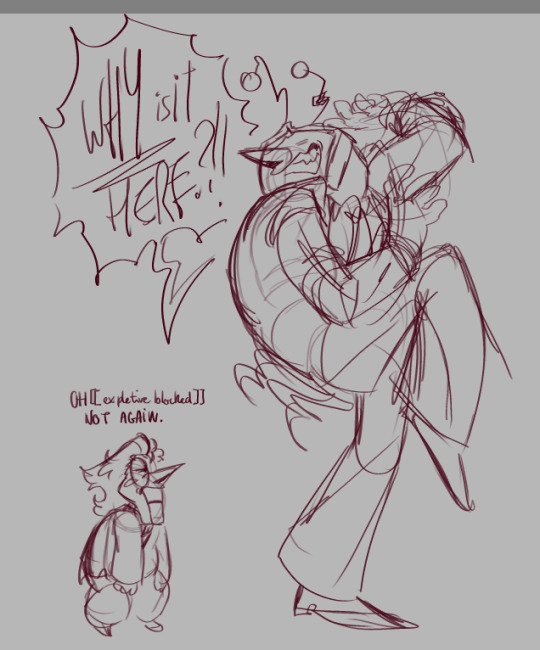
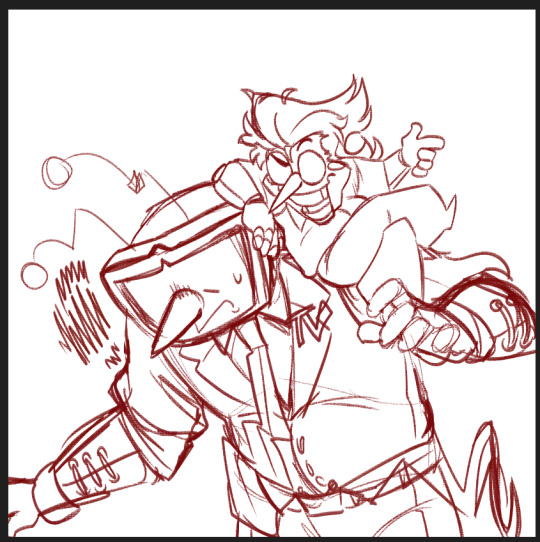





Whuh oh, AU stuff with Spamtenna??? Hell yeah
(Mu belongs to my friend @saaeya who's been collaborating with me on this heheheheh, and Scherryl belongs to me!)
#Oh yeah Spamton NEO is there too#For lore reasons#Anyway tAKE THE FOOD SPAMTENNA ENJOYERS#my art#doodle#deltarune#deltarune spoilers#deltarune chapter 3#deltarune au#mentor tenna au#mr tenna#tenna#spamton g spamton#spamton#spamtenna#spamton neo#deltarune oc#mu#scherryl tree#scherryl
1K notes
·
View notes
Note
Your story about trees makes my soul happy, because I used to hug trees all the time as a child. Not so much now, but you have inspired me to keep doing it💜
They must have loved you :)!
2 notes
·
View notes
Text




and there we go! continuation of my hermitcraft but lore accurate au thing! with a reconciliation of sorts?
part 1 | part 2
#if you saw this yesterday that was an exclusive preview#i just realized ive been using 'hermitcraft but lore accurate' as an au name without realizing#so that is it now i think#lore accurate hermitcraft au#hermitcraft#hermitcraft season 10#grian#goodtimeswithscar#gtws#desert duo#art tag#i think scar's trees are so cool i love them#comic#next comic is going to be longgggg bcs itll be mumbo for sure#but oh it's going to take a while im unfortunately soooo busy next month orz#though i thought this one would take longer too aldksldks#but i locked in thanks to the recent streams#i only recently learned that the feather on scar's hat is a vex one so now im sad i didn't draw that before#but i think you can see my hat-drawing abilities somewhat improving so that's exciting
2K notes
·
View notes
Text
Why the Alder Roots are Wet
In the depths of the alder grove Where the morning fog lingers Hides the runaway fae princess Slowly bleeding to death The trees wept as the princess died –with nothing they could do Taking her blood into themselves The first dryad was born
#thought up the first line randomly and ended up writing a little ballad#vaguely looked up alder tree lore & loosely made a little story around various tales#might add more to it eventually - but for now i like it#fairy lore#tree lore#alder trees#poems#fae poems#dryads
1 note
·
View note
Text
Tree lore
Those versed in tree lore speak loudly of the four trees that ring Outland. They speak of the Tree of Knowledge, to which the angels tend, in the Gardens of Peace. The Tree of Truth, which was named by the fiends of The Crevasse in their nigh-infinite pettiness, and feeds off the darkness that is rarely found outside that place. The Clockwork Tree, always frail, protected by great iron fortifications and legions of penal soldiers who learned too late that the crime of gazing upon the tree was to be drafted into it's defense. And the Tree of Names, upon who's branches many now nameless things have hung their names to allow themselves some measure of freedom. The most famous of those being Themself, though also most of the second generation of antitheon gods have used the tree to cloak themselves in namelessness.
Those best versed in tree lore whisper quietly about two other trees, one being the world tree itself, whose branches pierce high into the lands of the gentry and whose roots dig deep into the lands of twilight. The final tree, they say, is still a seed, yet to finish falling to the ground to take root. They dare not even whisper of what will happen then.
0 notes
